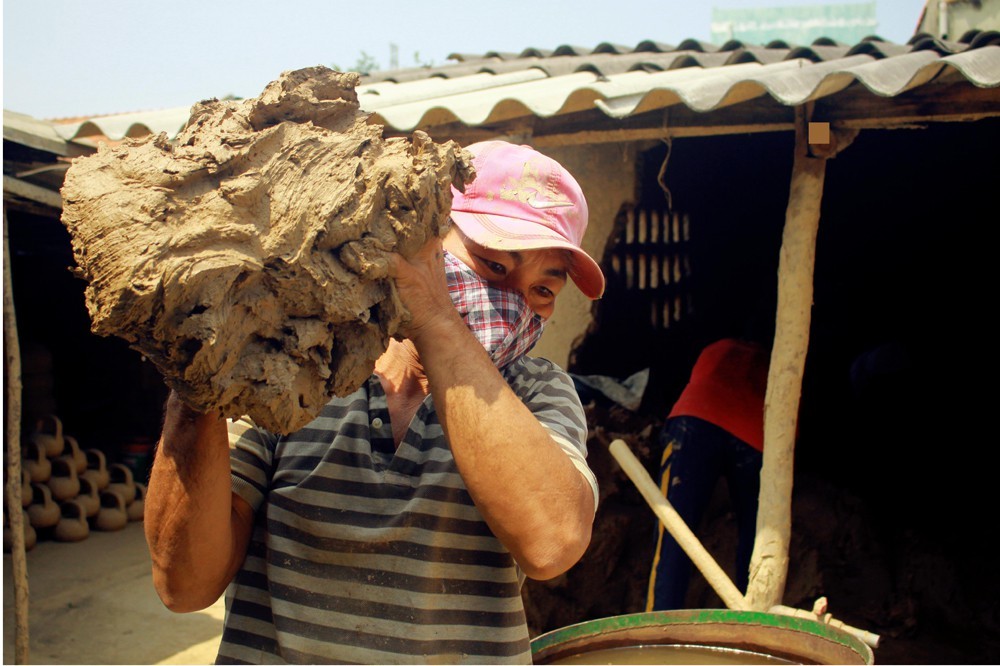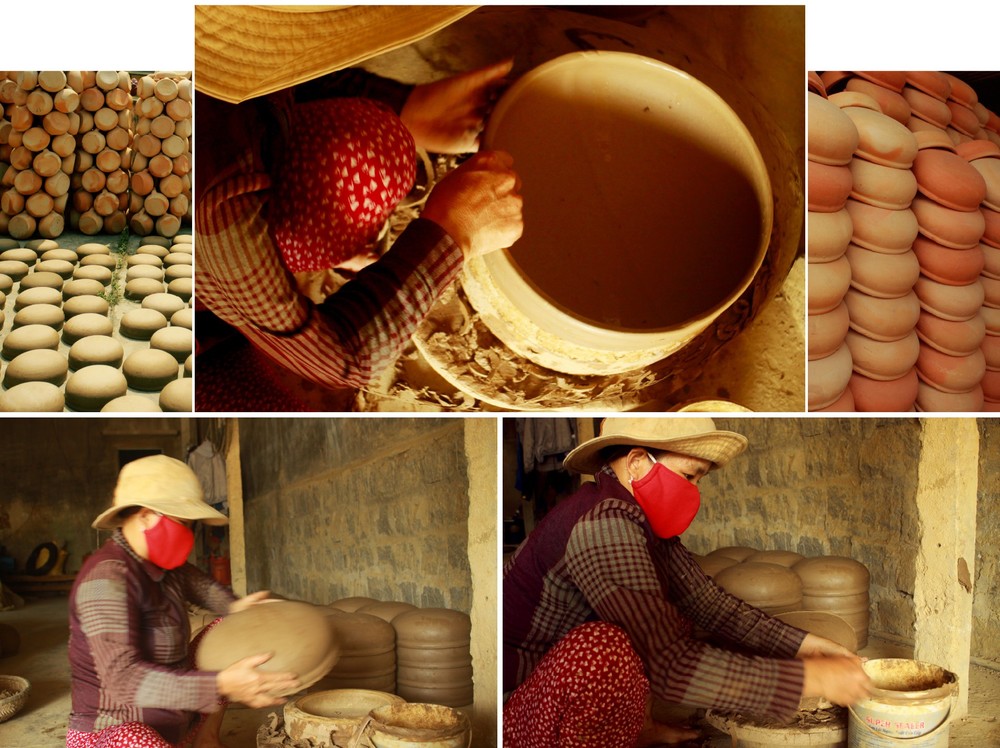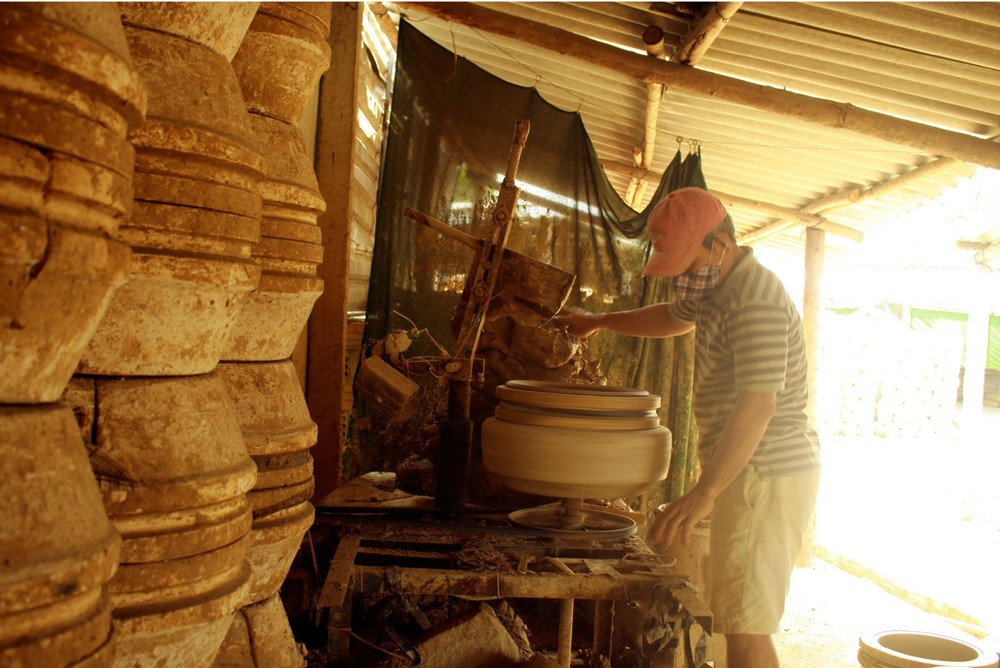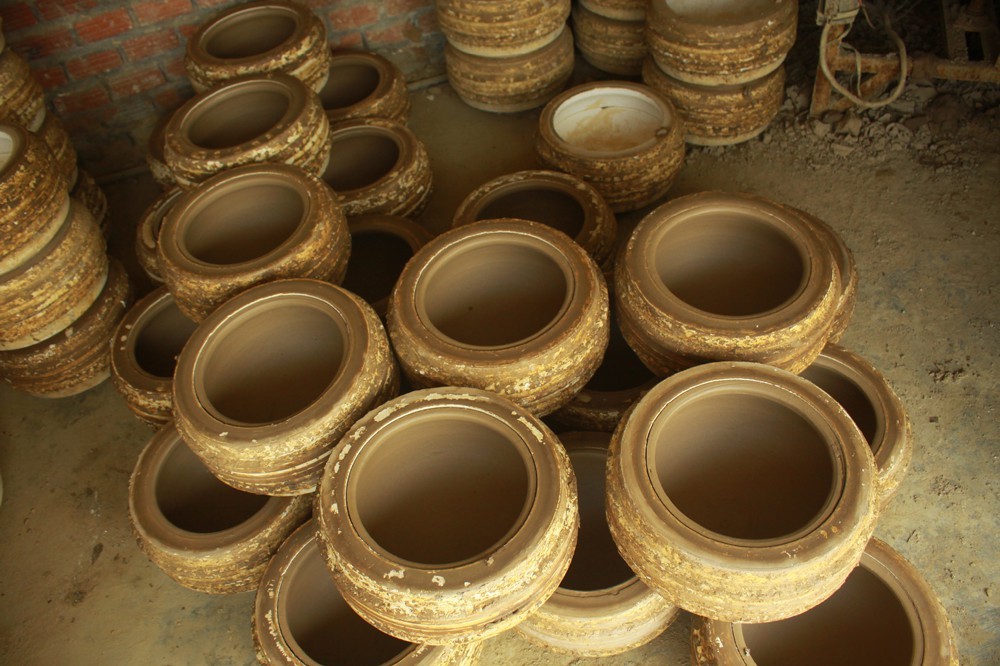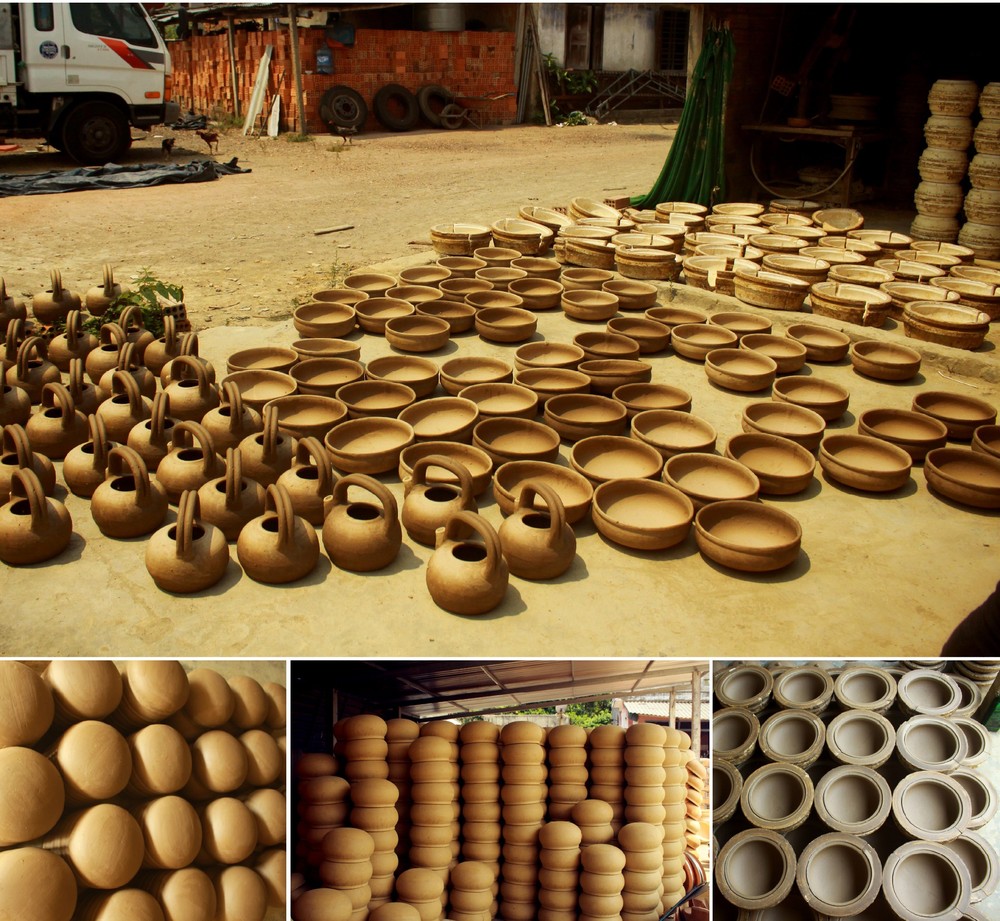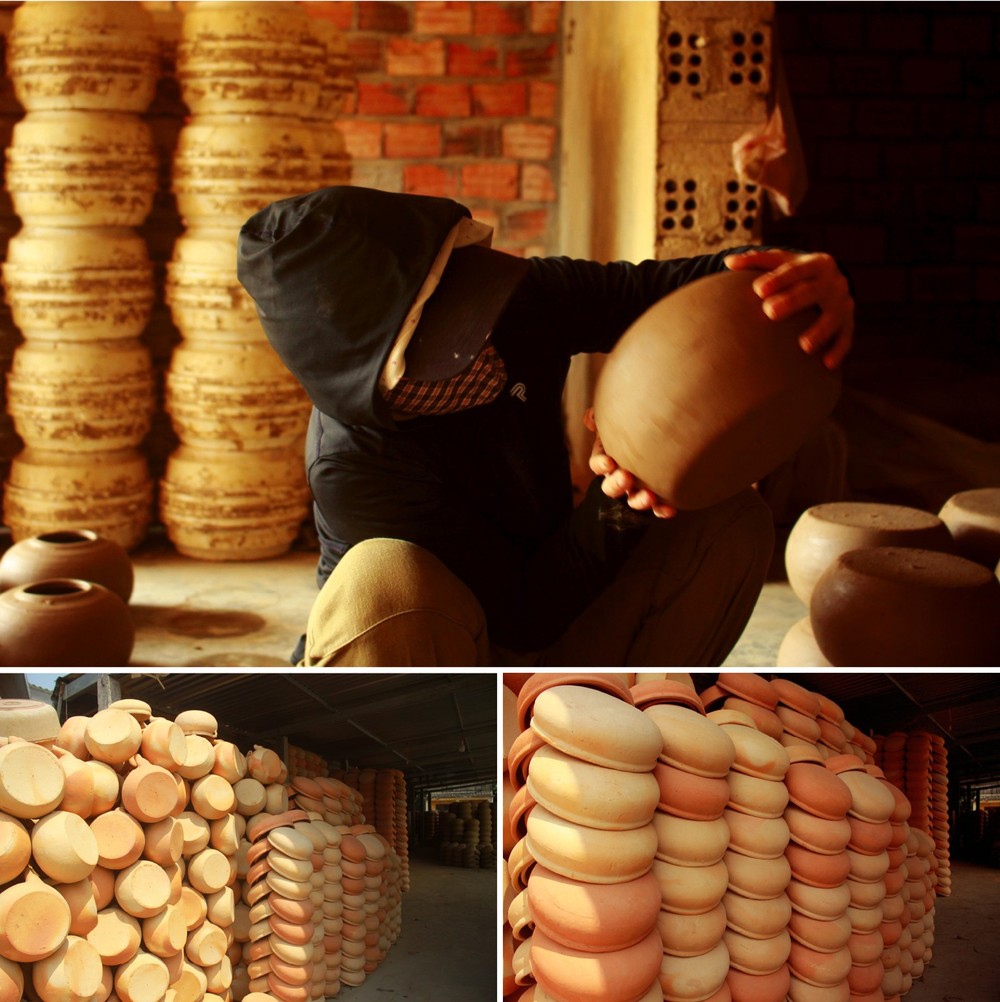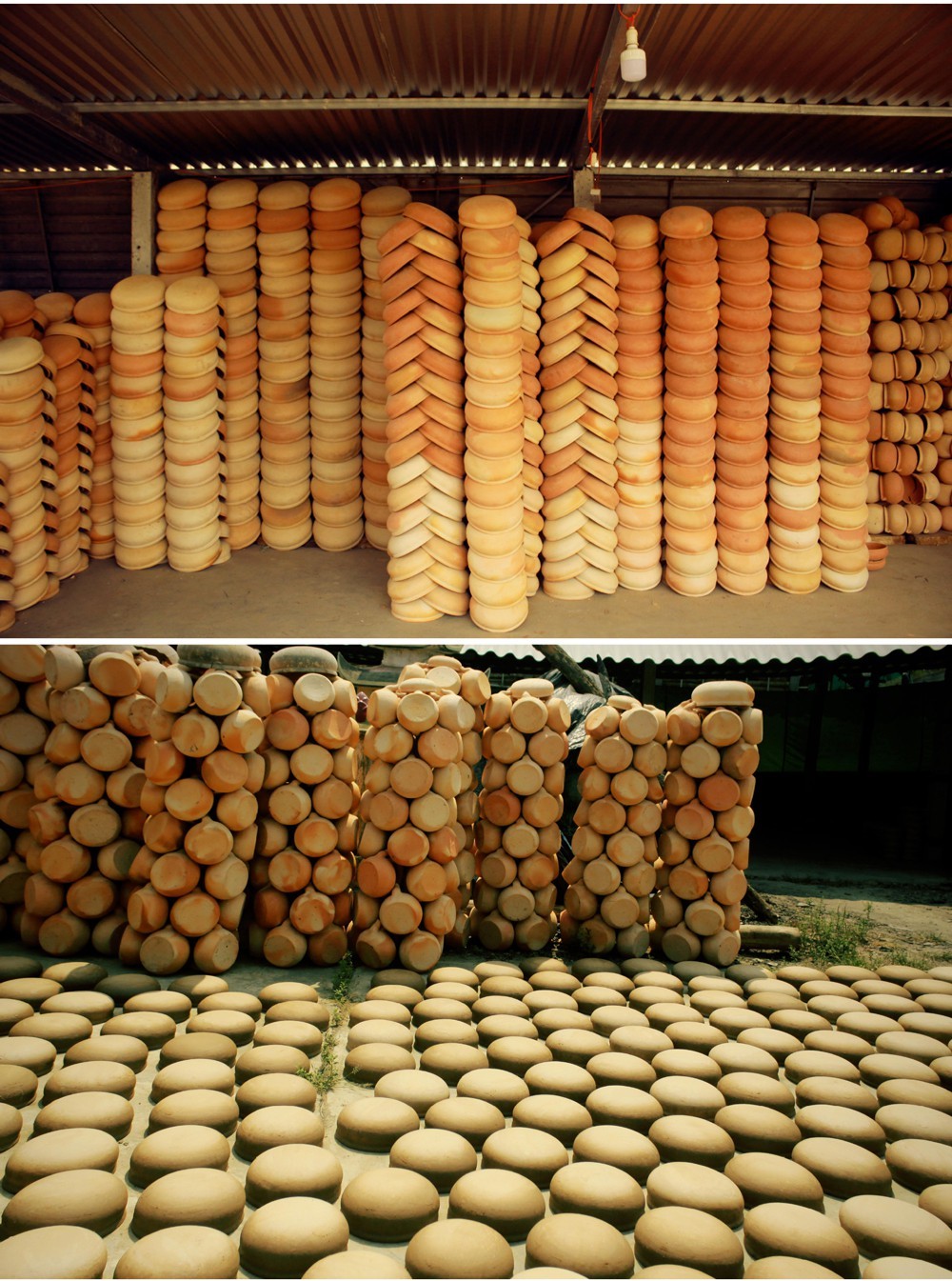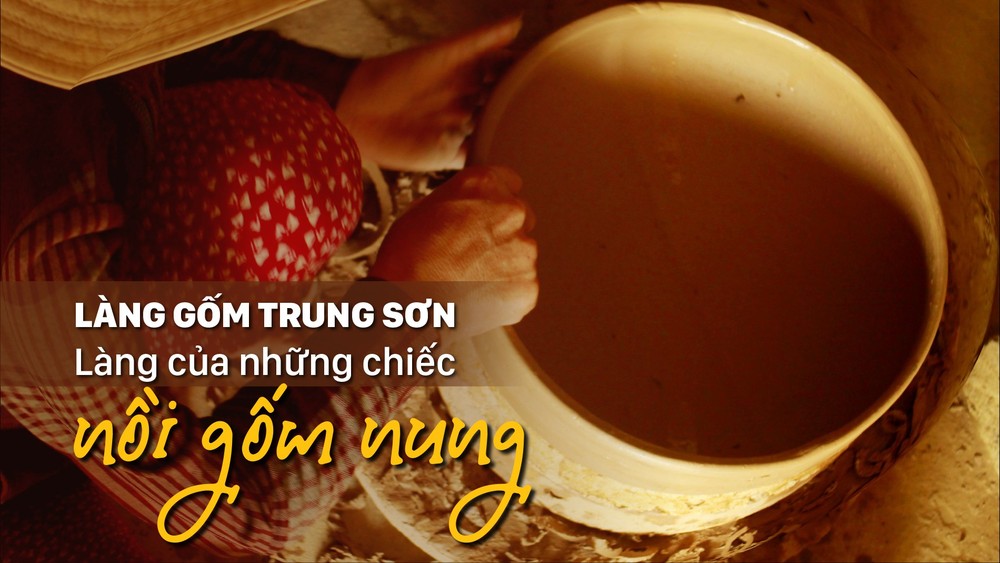
No one knows exactly when traditional pottery-making craft appeared. There are some estimates that the craft dated back from the Cham Culture or Nguyen Dynasty.
However, with a collection of 18 pottery jars which was found at Long Thanh archaeological site in Pho Thanh Commune in 1978, dating back around 2,500 to 3,000 years ago. It is thought that the traditional pottery-making craft belongs the Sa Huynh Culture. The collection of 18 pottery jars was recognized as a national treasure in 2018.
The traditional craft has been maintained and passed down through many generations with the most popular product of baked clay pot.
Making clay pot and kettle has been maintained and developed recently due to the flourishing market as people goes back traditional cooking methods, such as cooking rice and braising fish in clay pots, cooking Chinese herbal medicine in clay decocting pots.
The Pho Khanh earthenware’s unique characteristics is that it does not use enamel and looks fine, beautiful. The source of black and green clay located in Nui Dau while yellow clay is derived from Bau Sung.
It takes about ten minutes to shape and produce a pot by using machine and mold, but few women form products by their skillful hands.
The village'a products does not use enamel but they are shaped elegantly. Items are also durable because they are dried in the sunlight and fired carefully, said craftman Le Phuong Nam.
The pottery making is now easier, thanks to the operation of machines and equipment, he added.
Nam’s pottery factory produces about 500 pots and jars every day. Each pot has a mouth diameter from 20-40 cm that is sold from VND20,000 per piece.
The pottery-making craft has recently developed and created jobs for many people, especially the elderly and women, said worker Le Trai who has spent four years studying pottery making.
The Pho Khanh earthenware are consumed in many provinces of Quang Ngai, Quang Nam, Da Nang, Hue and among.
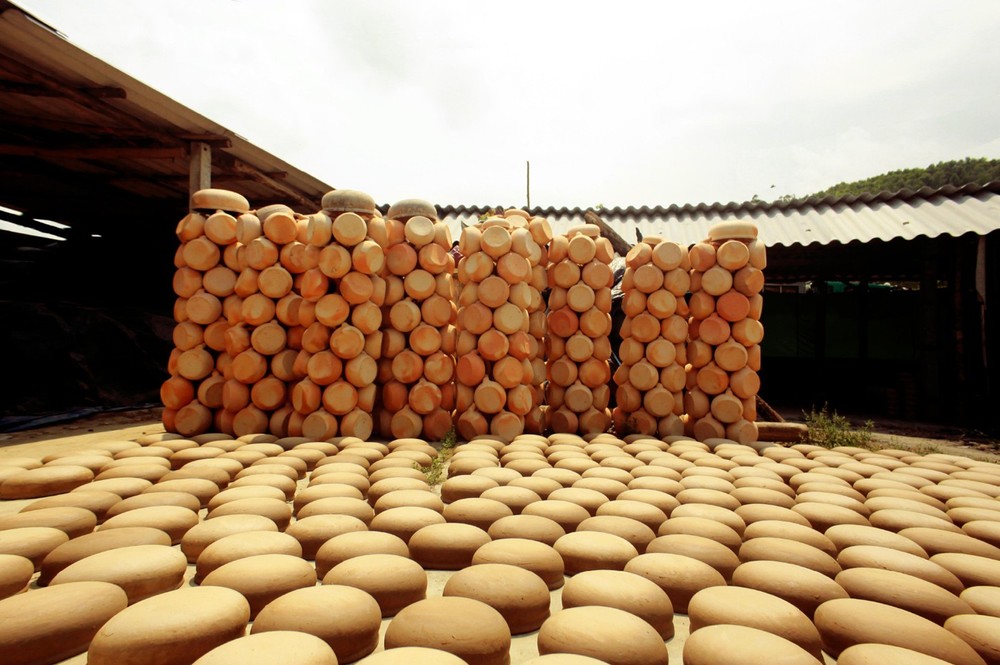
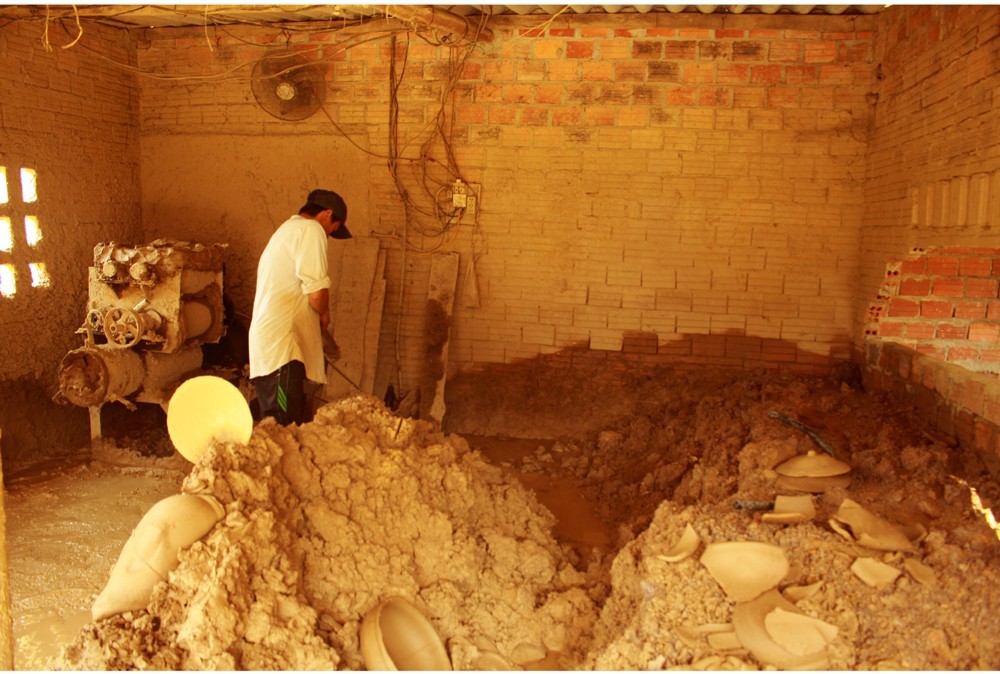 Grinding clay into powder
Grinding clay into powder
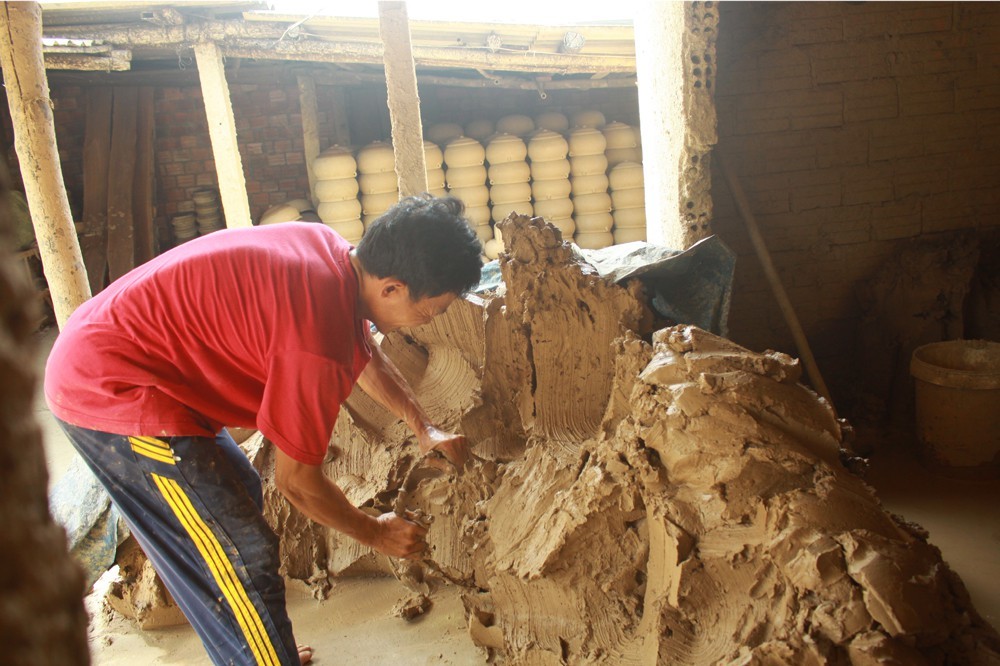 A clump of clay
A clump of clay
